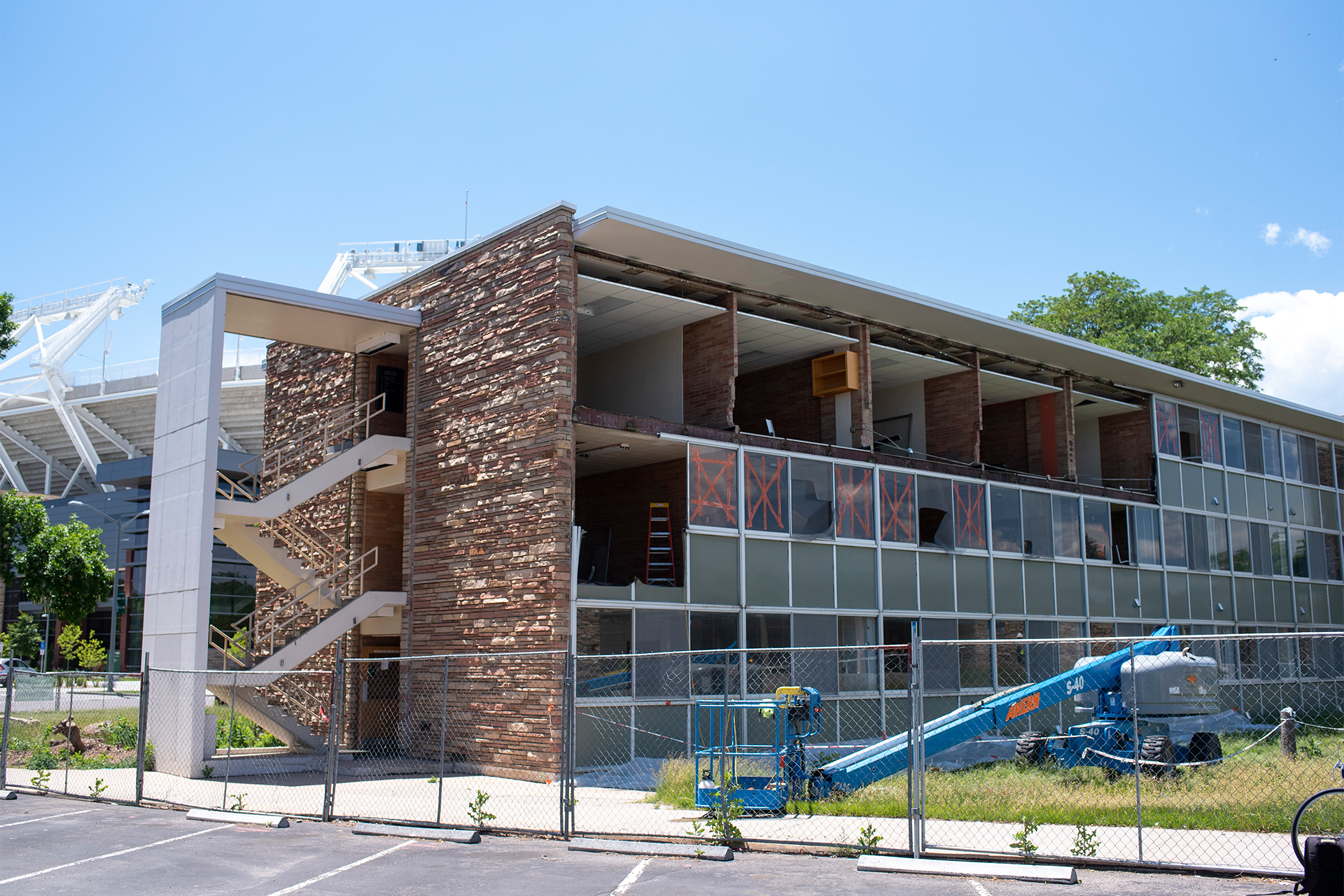
Aylesworth Hall was deconstructed to make way for the newest housing community on campus, Meridian Village.
Students returning to the Colorado State campus this fall may be asking, “What happened to Aylesworth Hall?” The former 1950s-era residence hall was deconstructed over the summer to make way for the newest housing community on campus, Meridian Village, in the initial stages of the design-build process.
Housing & Dining Services is planning for the future with this build – accommodating first-year students who are required to live on campus, as well as returning students who choose to stay on campus.
Housing & Dining Services has seen great success in building residence hall “villages,” which are groups of buildings that have connected and shared outdoor and indoor spaces that make a large university feel smaller and more community-centric. Academic Village was the first such residence at CSU, opening in 2008, followed by Laurel Village in 2014.
Meridian Village is a two-phase project, the first of which will sit on the now-vacant site of Aylesworth. It took three months to deconstruct the building, with materials separated, recycled, and removed. Now work will continue, first on underground systems not readily visible from the street.
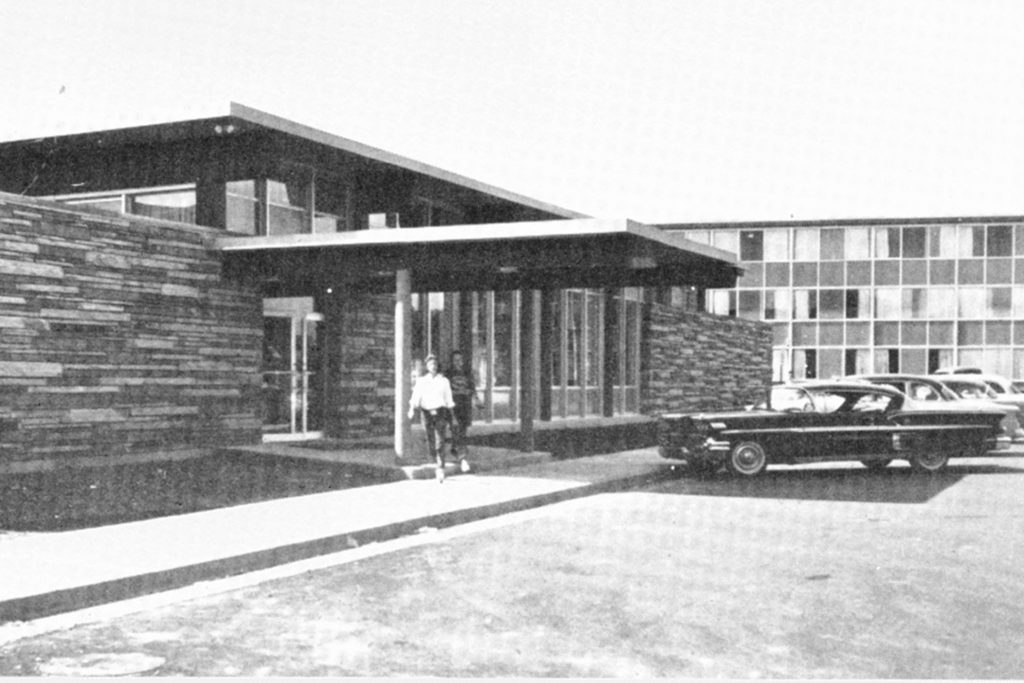
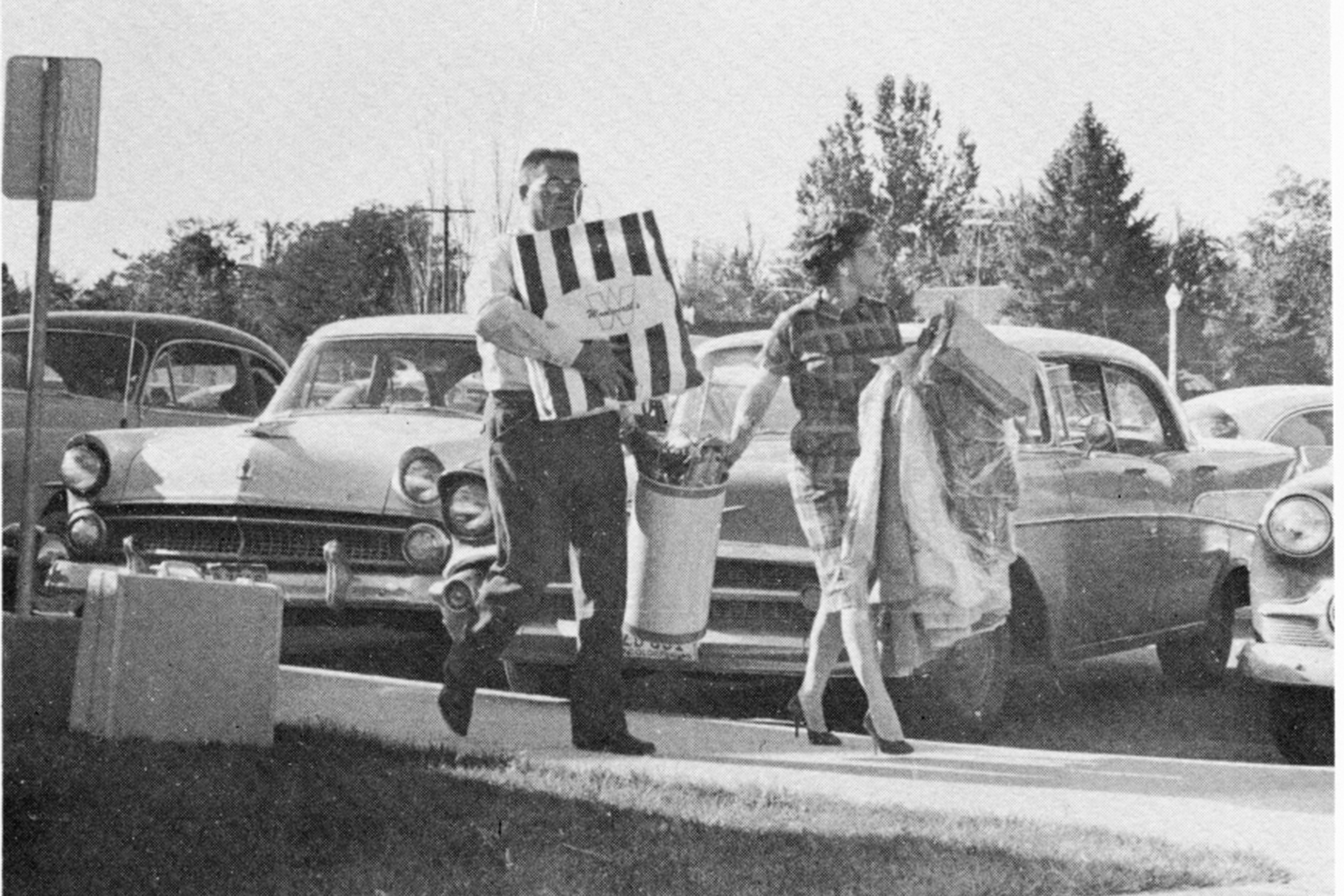
Ayleworth Hall in the 1950s and 1960s.
Over the years, Aylesworth spaces were used creatively to accommodate the needs of various staff members and departments, often times not used as originally intended.
“It was sad at first to see Aylesworth come down, but it really was an outdated building,” says Colleen Rodriguez, project coordinator in Creative Services. “We used a former bathroom as office space for our IT administrator, former residence hall rooms as meeting spaces, and climate control was non-existent on our two floors in the southwest wing for decades. I remember when they finally took out the original gold carpet, we were displaced to the classroom area in the middle of the building. We had one of our Colorado afternoon thunder showers and the roof of the classroom leaked and ruined all our stuff. I’m excited to see what its footprint will become to help serve our students into the future.”
Facts about Ayleworth Hall
As we say goodbye to Aylesworth Hall and celebrate CSU’s sesquicentennial (150-year anniversary), here are a few little-known historic facts about the building:
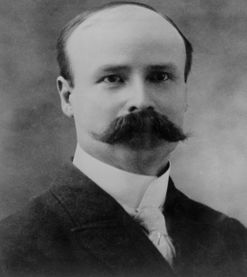
• Named after Barton O. Aylesworth, CSU’s fourth president: 1899-1909
• It was one of three campus buildings under concurrent construction from 1957 to 1959 (Ellis, Aylesworth and Allison) to meet the demand of students attending Colorado A&M after World War II. These buildings and North Aggie apartments (1960) were needed to replace the quonset huts on the Parmelee/Corbett site known as “Vet Village.” Quonset huts were given by the U. S. government to many land-grant institutions/universities as war surplus, to be used as temporary housing to support veterans attending college on the GI Bill after the war.
• The building was used for campus housing for only 12 years: from fall 1958 through spring of 1970. With the opening of the Towers (Westfall and Durward) in 1968, the rooms were no longer needed.
• Housing still “owned” the building and it was leased by the University until the late 1990s when it was officially removed from the bond debt.
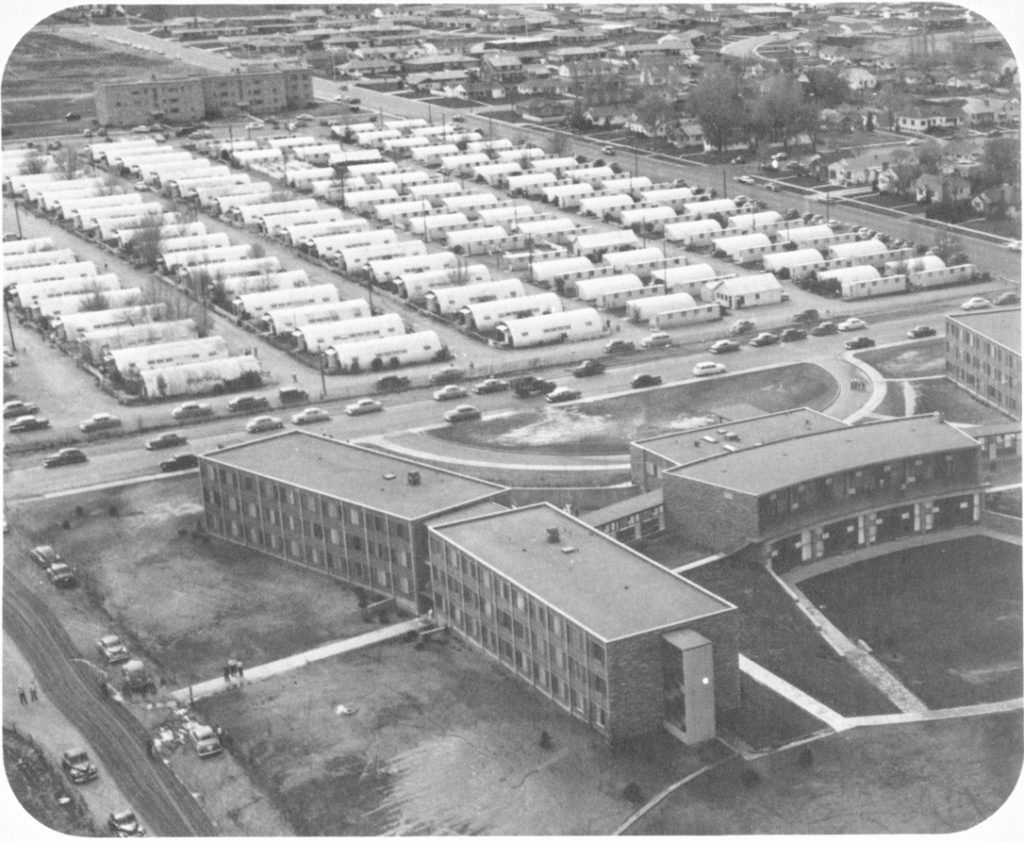
Veteran’s Village Quonset huts and Green Hall in 1955.
• Conference and Event Services used the facility in the early 1970s until it moved to Rockwell Hall. Some other larger departments that have occupied Aylesworth over the years included Purchasing, CSU Police Department, Creative Services, 4H, Extension, Health Services, and Design and Merchandising.